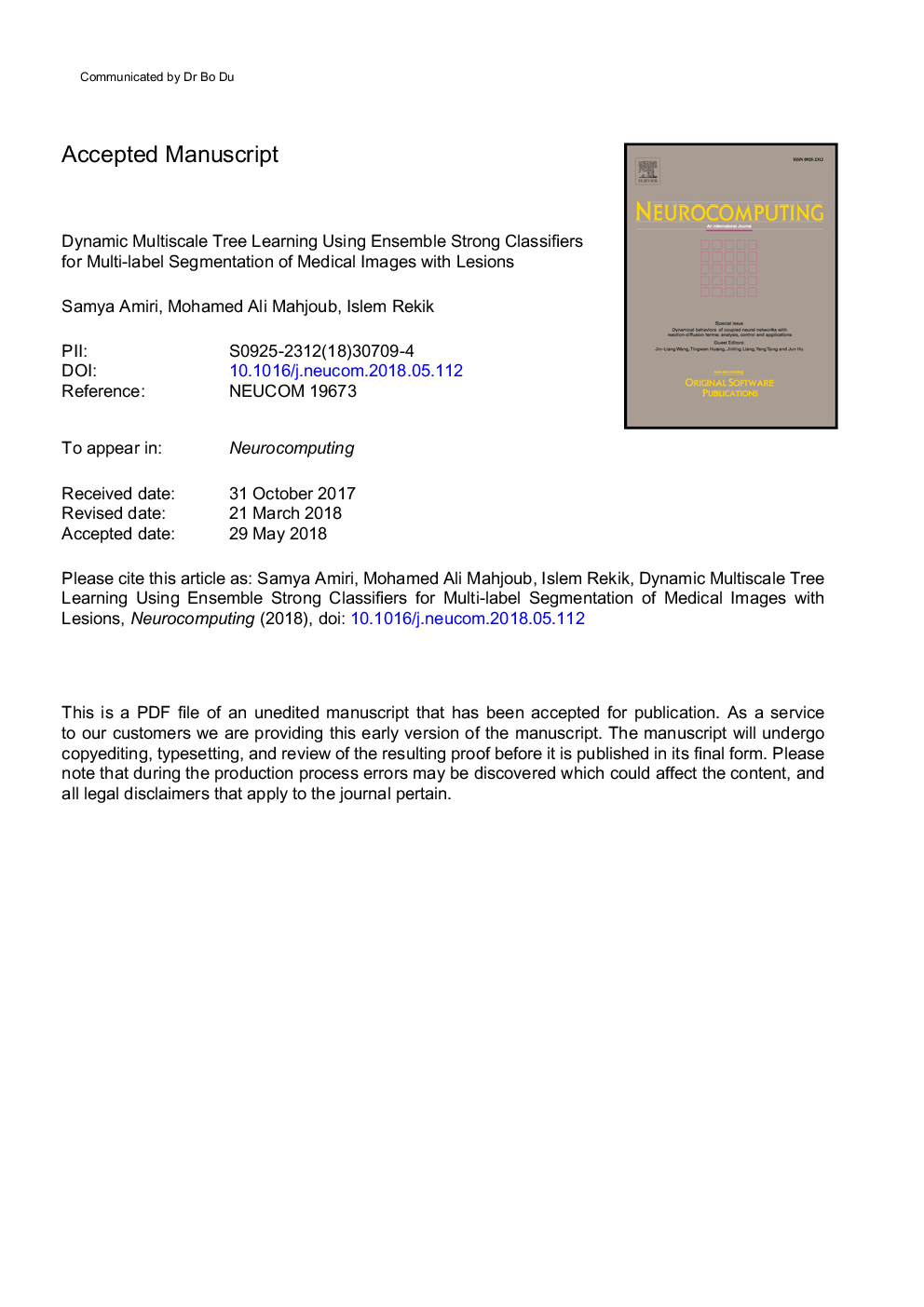| کد مقاله | کد نشریه | سال انتشار | مقاله انگلیسی | نسخه تمام متن |
|---|---|---|---|---|
| 8953572 | 1645950 | 2018 | 28 صفحه PDF | دانلود رایگان |
عنوان انگلیسی مقاله ISI
Tree-based Ensemble Classifier Learning for Automatic Brain Glioma Segmentation
ترجمه فارسی عنوان
آموزش طبقه بندی سازنده ی درختان برای جداسازی خودکار گلیوما مغز
دانلود مقاله + سفارش ترجمه
دانلود مقاله ISI انگلیسی
رایگان برای ایرانیان
کلمات کلیدی
یادگیری طبقه بندی گروهی تقسیم بندی، درخت پویا، تقویت، مغز، تومور، 00-01، 99-00،
موضوعات مرتبط
مهندسی و علوم پایه
مهندسی کامپیوتر
هوش مصنوعی
چکیده انگلیسی
We introduce a dynamic multiscale tree (DMT) architecture that learns how to leverage the strengths of different state-of-the-art classifiers for supervised multi-label image segmentation. Unlike previous works that simply aggregate or cascade classifiers for addressing image segmentation and labeling tasks, we propose to embed strong classifiers into a tree structure that allows bi-directional flow of information between its classifier nodes to gradually improve their performances. Our DMT is a generic classification model that inherently embeds different cascades of classifiers while enhancing learning transfer between them to boost up their classification accuracies. Specifically, each node in our DMT can nest a Structured Random Forest (SRF) classifier or a Bayesian Network (BN) classifier. The proposed SRF-BN DMT architecture has several appealing properties. First, while SRF operates at a patch-level (regular image region), BN operates at the super-pixel level (irregular image region), thereby enabling the DMT to integrate multi-level image knowledge in the learning process. Second, although BN is powerful in modeling dependencies between image elements (superpixels, edges) and their features, the learning of its structure and parameters is challenging. On the other hand, SRF may fail to accurately detect very irregular object boundaries. The proposed DMT robustly overcomes these limitations for both classifiers through the ascending and descending flow of contextual information between each parent node and its children nodes. Third, we train DMT using different scales for input patches and superpixels. Basically, as we go deeper along the tree edges nearing its leaf nodes, we progressively decrease the patch and superpixel sizes, producing segmentation maps that capture a coarse-to-fine image details. Last, DMT demonstrates its outperformance in comparison to several state-of-the-art segmentation methods for multi-labeling of brain images with gliomas.
ناشر
Database: Elsevier - ScienceDirect (ساینس دایرکت)
Journal: Neurocomputing - Volume 313, 3 November 2018, Pages 135-142
Journal: Neurocomputing - Volume 313, 3 November 2018, Pages 135-142
نویسندگان
Samya Amiri, Mohamed Ali Mahjoub, Islem Rekik,
